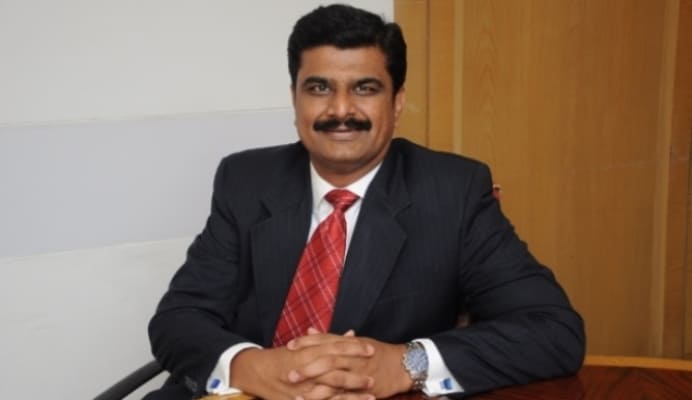
Rendezvous with Seema Bangia Vice – President & Chief People Officer, Mahindra Agri, Defence & Aero Sectors and Board of Director
Seema Bangia has been working with Mahindra Defence Systems Limited (Agri, Defence and Aero Sectors of Mahindra & Mahindra Limited) as “Chief People Officer”.
She has joined Mahindra Group in the year 2012 as Head – Mahindra Defence Systems Limited. She is a member of Mahindra Defence Systems Limited Board of Directors. She is heading the Human Resource function of both Domestic and International Operations. She has more than 30 plus years of industry experience. In her stint as Head –Human Resource she played vital role in building strong HR processes and enabling benchmark employee engagement levels in business units of Defence Sector.
Prior to Mahindra, she has worked with Carlsberg India, ZTE Telecom, Canon India, Keane Inc. (Formally Metamor Inc.), Lucent Technologies, Motorola Information Systems, Arthur Andersen, Nestle India, Triangle Camera Inc., Chicago.
Seema Bangia Graduated from Delhi University in Economics and Business Studies. Also, specialized in Human Resource Management from First Business School, Chicago, USA
Q- What are the HR challenges in current times when it comes to Talent Strategy especially in Hybrid Work Model?
These are unprecedented times and real disruption has happened the way we used to think, behave, and work. This pandemic has taught us many newer ways of sustaining and progressing forward.
Hybrid work model is need of the hour. This model has emphasized softer aspects of skill sets and human behaviour. Newer competencies have emerged especially like agility, compassion, and ambiguity management.
These are traits or behaviours that now HR need to identify, develop, and nurture. Talent strategy will be drawn towards hiring talent who not just have functional competencies but if not more but equal level of these new emergent set of competencies. Agility brings in quickly adapting to the changed scenario with the best frugal mindset, compassion brings not only understanding business exigencies but also employee needs and aligning the two.
Basically, aligning the purpose of organization with employees. Work Culture will be the very essence of hybrid work model – more output-driven rather than input. Ambiguity management is my favorite when it comes to defining it.
We didn’t know what the first wave or second wave would have for us. We all continued working with more passion and energy. This aspect has given us strength to come over any challenge and do better no matter even if the way forward isn’t clear.
Q- Is Hybrid Work Model sustainable, how to make it for the best Hybrid Work Experience?’
This is the future. Not just saving on infrastructure cost but it is also required for sustaining natural resources. Earlier we used to just speak or think about such initiatives but with the pandemic, we have learnt a hard way that yes, it is possible, and it is the best.
This model gives an opportunity for maintaining human relations, social skills, interpersonal skills and at the same time flexibility or deciding your own workplace. Many organizations have realized the potential of this model and have declared 100% hybrid work model.
Q- How do you see cultural challenges in remote working teams?
I think besides social skills, human interactions and in-person meetings not much has changed in terms of business deliverables.
Of course, after a while, fatigue has set in but that’s the new normal. The biggest challenge I see in 100% remote working environment is that less interaction with your co-workers and your senior leadership team deprives you of learning different skills and experiences.
Another aspect is that in virtual environment, you are not able to connect in deep conversation over coffee breaks or lunch breaks. Such conversations help develop one-to-one relationship with your colleagues.
Especially for HR folks, when through dialogue one is able to find out the motivation levels of employees through body language, demeanor and more in little informal settings.
Q- Voluntary attrition has increased in remote working teams, how to keep teams engaged?
Employee engagement has been a challenge not only for HR but for Managers too in the remote working environment. Communication is the key to keeping teams engaged.
Constantly keeping in touch with the teams, motivating them, being sensitive towards their personal space, understanding their challenges & limitations of working from home really helps in keeping employees not only engaged but focused on productivity without compromising on efficiency.
Also having informal & casual chats with teams helps in maintaining the connectivity which otherwise may get lost. Counselling employees on professional and personal front has also helped in retention.
The mantra is “If an employee has a clear understanding of their objectives and expected deliverables with constant motivation and career progression opportunities, then one can really control attrition”
Q- Any concluding comments?
We have learnt many new skills and behaviours during this last one and a half years, and I am sure we are not the same as before. We have become more agile, adaptive, and compassionate. That’s the way to go.
Disruption will continue to pop up in many different forms and situations. Hybrid working model is going to stay and going to be the most desired model. Repercussions, if any are not known and it will unfold as and when more data on experiences is shared by the organizations and employees.
*These are my personal inputs and thoughts and not Mahindra Agri, Defence or Aero Sectors.
Thank You, Seema!








